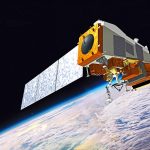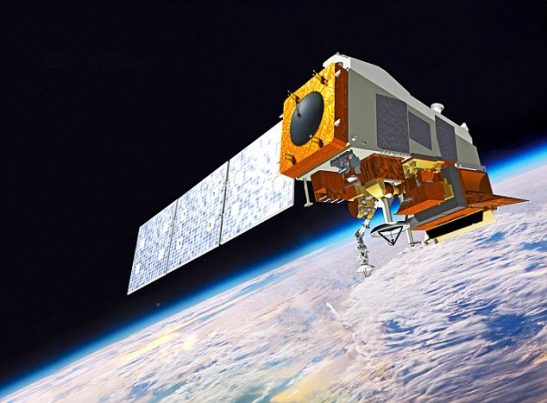
Full color HD surveillance videos: First satellite of its kind gives “Big Brother” a whole new dimension with capability to record individuals from space
Tuesday, July 17, 2018 by Frances Bloomfield
http://www.privacywatch.news/2018-07-17-first-satellite-of-its-kind-gives-big-brother-a-whole-new-dimension-with-capability-to-record-individuals-from-space.html

On January 11, 2018, the world’s first full-color satellite was launched into space. While still a prototype, the “Big Brother” satellite is said to be capable of capturing high-definition videos of individual people from its position in orbit. Moreover, its power is such that it can detect objects on the ground no larger than 26 inches (65 cm), in a report published in the Daily Mail.
The Carbonite-2 satellite was among the 31 lifted into space by an Indian Polar Satellite Launch Vehicle (PSLV) that was launched from the Satish Dhawan Space Centre located in Sriharikota, Andhra Pradesh. As of current, the satellite will be orbiting the earth at an altitude of 314 miles (505 km). According to Earth-i, operators of the satellite, it can point at specific locations to take pictures and film videos that are up to 50 frames per second. This will allow the satellite to record moving vehicles such as cars and ships, and will even allow it monitor the flow of traffic or create maps for disaster relief operations.
On top of being the first full-color satellite, one other feature of the Carbonite-2 that makes it unique is that its video equipment is comprised of commercial off-the-shelf (COTS) electronics originally meant for use in mobile devices. According to TheEngineer.co.uk, combining earth observation technology with COTS was already proven feasible in a previous demonstration by the satellite’s manufacturer, Surrey Satellite Technology Limited (SSTL). However, the capabilities were further enhanced by the inclusion of auxiliary systems like data storage, upgraded avionics (or electronic equipment fitted into aircraft), better pointing accuracy, and fast downlink.
Should the Carbonite-2 perform as expected, then SSTL, will proceed with sending up the first batch of Earth-i’s five operational spacecraft by 2019. Following this, Earth-i plans on launching 10m more satellites. As is, the Carbonite-2, or the VividX2 as it’s known by SSTL and Earth-i, will serve as the basis for the up-and-coming commercial satellite constellation called Vivid-i.
Of the satellite’s launch, Earth-i Chief Executive Officer (CEO) Richard Blain has called it a “significant milestone” for his company and for the global space industry as a whole. “We are now researching and testing the technology and data services for the Vivid-i Constellation using the still and video imagery from this prototype – and showing our customers what will be possible in the future from new capabilities such as colour video from space,” added Blain.
The director of Earth Observation Programmes at the European Space Agency (ESA), Josef Aschbacher, has spoken glowingly of the Carbonite-2’s successful entry into orbit as well. “The launch of VividX2 is a significant next development of Earth-i’s constellation, and welcomed by ESA,” he stated. “The Vivid-i Constellation will provide capabilities we haven’t seen before including full-colour video, and an assured stream of high-quality data from space to help improve both our planet and our lives on Earth.”
Although the Carbonite-2 is indeed a technological masterpiece, one other thing it should be considered is a cause for concern. Spy satellites are nothing new; in fact, they’ve been around since the 1970s, or possibly even much earlier. In 2016, a former engineer at biotechnological company Perkin-Elmer revealed that the U.S. has been employing spy satellites for decades. Codenamed “Hexagon,” the satellites of this program allowed the U.S. intelligence analysts to keep a watchful eye on the Soviet Union and ensure that ensure that the nation adhered to arm control treaties. (Related: Google patent application admits existence of spy technology that listens to your ambient noise to target ads.)
During this time, Hexagon’s satellites weighted a whopping 30,000 lbs each and were the size of school buses. Compare that to the Carbonite-2, which is said to weigh no more than 224 lbs. Even more disconcerting is the fact that the Carbonite-2 was put together with the same technology that goes into powering smartphones and tablets, so putting it together isn’t too costly nor too difficult. Imagine what could be done if other satellites like this one fell into the hands of organizations that wanted to watch your every move – imagine it now because that could be the reality in a few years’ time.
Go to Surveillance.news to remain updated on any and all news about the Carbonite-2, or its potential successors.
Sources include:
Tagged Under: Tags: aerospace, big brother satellite, Carbonite-2, electronics, full color satellite, future tech, innovation, observation technology, science and technology, Space, surveillance





